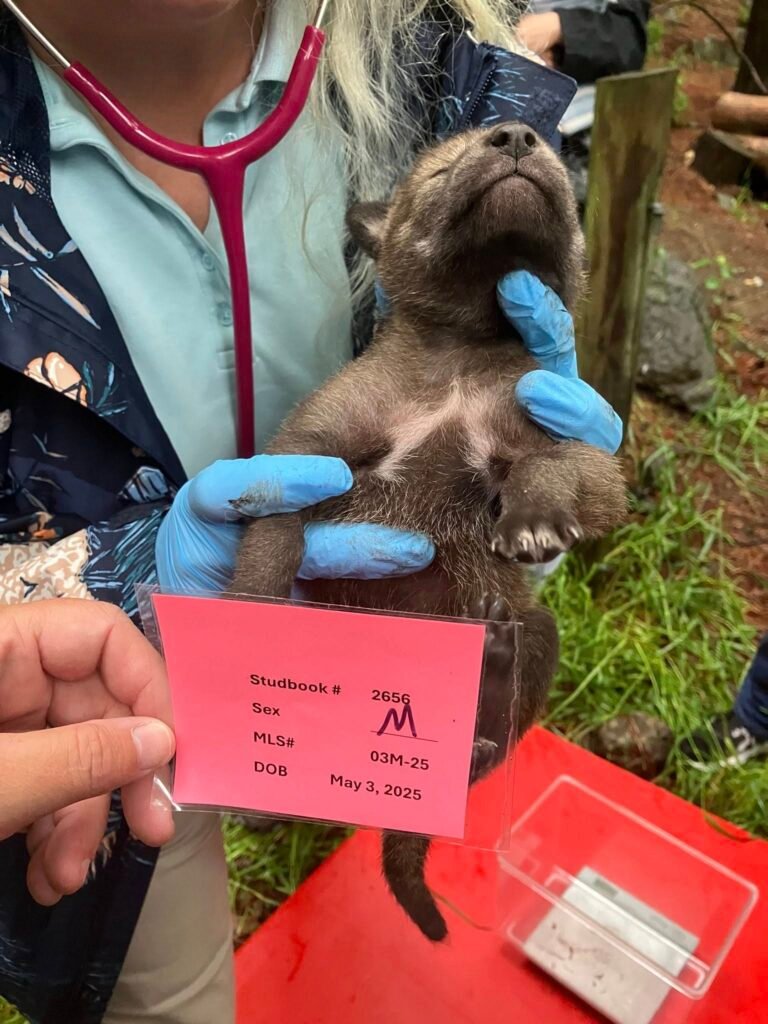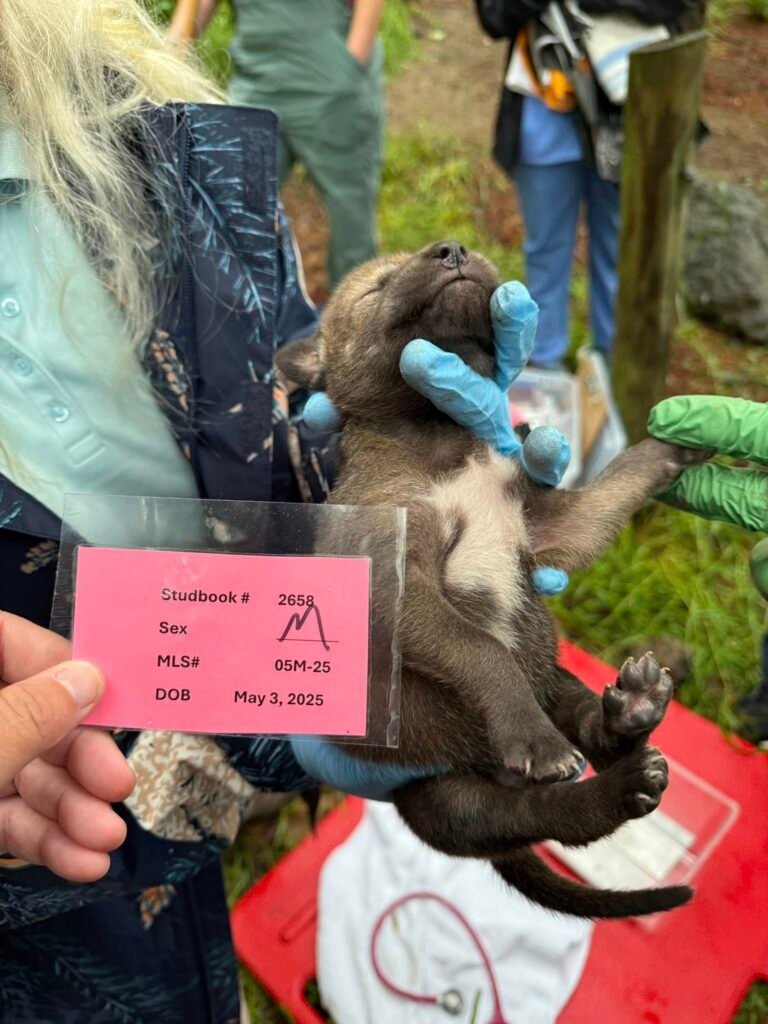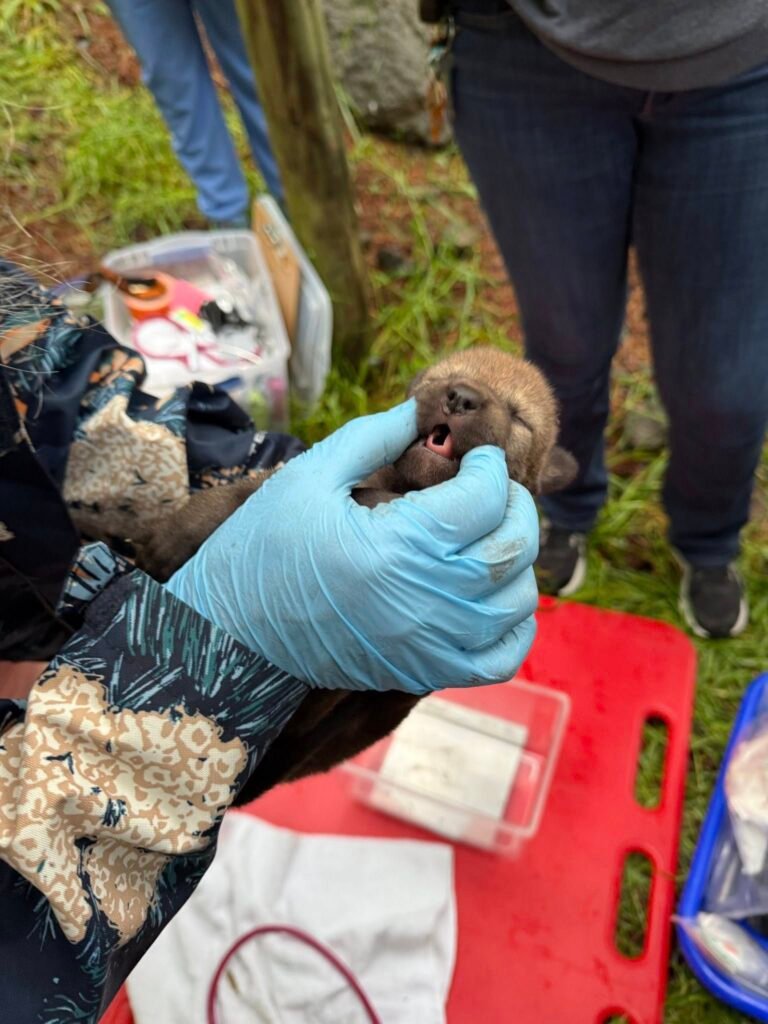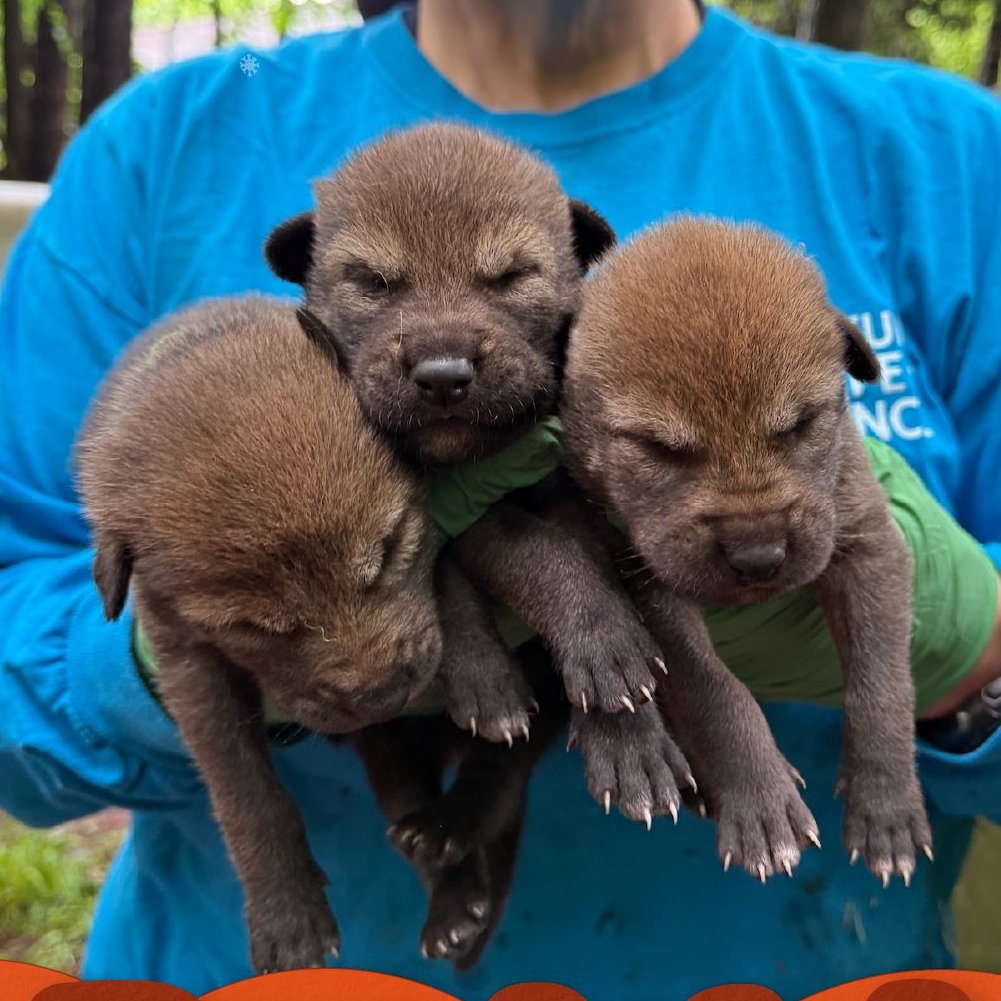DD Animal News – In a major win for conservation, three of the world’s rarest puppies have just made their debut at the Museum of Life and Science in Durham, North Carolina. The pups, born on May 3, belong to the critically endangered red wolf species, who get their name from the cinnamon highlights in their coats.
The museum announced the exciting news recently, noting that all three pups are healthy and thriving under the care of their parents, Martha and Oka. The pair were matched two years ago as part of a national breeding effort to preserve genetic diversity in the red wolf population, which has dwindled dramatically in the wild.
Tiny Paws, Big Impact

Sherry Samuels, senior director of animal care at the museum said every birth is crucial to their survival. With the red wolf being a step away from extinction, each new pup born in captivity is giving hope for species recovery. With the red wolf able to live 15 years in captivity and seven years in the wild, human care and population recovery efforts remain key in continuing to engage in captive breeding.
Red wolves once ruled as top predators throughout the southeastern United States. But due to habitat loss, hunting, and human conflict, their numbers plummeted. Today, it’s estimated that only about 20 red wolves remain in the wild, primarily in and around North Carolina’s Alligator River National Wildlife Refuge. Another 300 are being cared for in facilities like zoos and wildlife centers, where strategic breeding programs are working to bring the species back from the brink.
A Long-Term Commitment to Conservation

The Durham museum has played a key role in red wolf conservation for decades. Since 1993, the facility has welcomed 23 red wolf births across multiple seasons. Last year alone, the museum celebrated the birth of seven wolf pups—born to Adeyha, a Wisconsin native, and Oak, who was born at the N.C. State University College of Veterinary Medicine.
When the pups reach maturity, they may be relocated to other partner institutions to help diversify the gene pool and support population growth across North America.
Meet the Pups—Soon!
While the new pups are still being closely monitored behind the scenes, the museum says they’ll be ready for public viewing around mid-June. But visitors hoping for a glimpse should bring patience.
Red wolves tend to be shy and avoid crowds, Samuels noted, they are encouraging quiet observation and respect for their space. They may not be front and center, but that’s part of what makes them so special.
The museum, located at 433 W. Murray Avenue in Durham, is home to more than 60 animals—including black bears, lemurs, and now, three precious red wolf pups. The next steps for the trio will be discussed this summer during the American Red Wolf SAFE planning meeting, which coordinates national conservation strategies.
Why This Matters

The birth of these pups isn’t just a feel-good moment—it’s a sign that decades of effort are paying off. With fewer than two dozen red wolves left in the wild, every new pup counts. And thanks to places like the Museum of Life and Science, there’s still hope that the howl of the red wolf will echo through America’s wild places once more.






